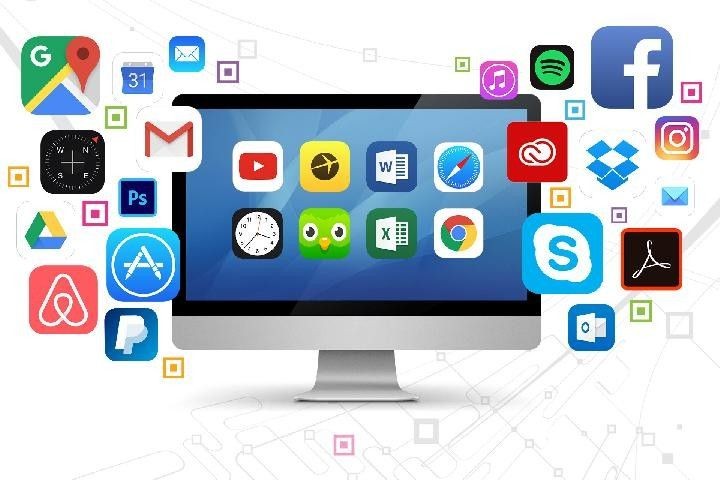In today’s digital world, computer software plays a vital role in driving technology and innovation. From operating systems to applications, software is the backbone of all modern devices. For students venturing into computer science or simply curious about technology, understanding computer software is crucial. This guide aims to explain computer software in a simple and comprehensive manner.

What is Computer Software?
Computer software refers to a collection of instructions, data, or programs that enable computers to perform specific tasks. Unlike hardware, software is intangible and cannot be physically touched. It acts as the intermediary between the user and the computer hardware, instructing the hardware on what to do.
Types of Computer Software
Computer software can be broadly categorized into three main types:
1. System Software
System software manages and controls computer hardware, allowing applications to run smoothly. It forms the core foundation that bridges the gap between hardware and the end user.
Examples of System Software:
Operating Systems (OS): Windows, macOS, Linux
Utilities: Antivirus software, disk cleanup tools
Device Drivers: Software that helps the OS communicate with hardware (e.g., printer drivers)
Key Functions:
Manage hardware components
Control system processes
Facilitate file managementE
nsure efficient memory allocation
2. Application Software
Application software is designed for end users to perform specific tasks. These programs allow users to interact with the system and carry out various activities, from creating documents to browsing the internet.
Examples of Application Software:
Productivity Tools: Microsoft Word, Excel, Google Docs
Web Browsers: Chrome, Firefox, Safari
Media Players: VLC, Windows Media Player
Communication Tools: Zoom, Skype, WhatsApp
Key Functions:
Enhance user productivity
Provide entertainment and media access
Facilitate communication and collaboratio
3. Programming Software
Programming software provides tools for developers to write, test, and debug code. It allows the creation of other types of software by offering environments where programmers can develop applications.
Examples of Programming Software:
Text Editors: Notepad++, Sublime Text
Compilers: GCC, Java Compiler
Integrated Development Environments (IDEs): Visual Studio, Eclipse
Key Functions:
Write and edit source code
Test and debug programs
Provide development environments for coders
Importance of Computer Software
Without software, computers would merely be lifeless machines. Software transforms hardware into functional tools capable of solving real-world problems. Here are a few reasons why software is essential:
Automation: Automates repetitive tasks, saving time and effort.
Communication: Enables seamless communication through email, messaging apps, and video conferencing.
Data Management: Facilitates data storage, retrieval, and analysis.
Entertainment: Powers video games, streaming services, and multimedia experiences.
Examples of Popular Software in Use Today
Software Type |
Examples |
Usage |
| Operating System | Windows, macOS, Linux | System managem ent and control |
| Word Processin 9 | Microsoft Word, Google Docs | Document creation and editing |
| Web Browser | Google Chrome, Mozilla Firefox | Internet browsing and online interactio n |
| Media Player | VLC Media Player, KMPlayer | Playing audio and video files |
| Communic ation Tools | Zoom, Slack, Skype | Video conferen cing and messaging |
| Graphic Design | Adobe Photosho P, Canva |
Image editing and graphic design |
How to Choose the Right Software
When selecting software, students should consider the following factors:
1. Purpose: Identify the primary goal the software will serve.
2. Compatibility: Ensure it is compatible with your operating system and hardware.
3. Ease of Use: Opt for software with a user-friendly interface.
4. Cost: Some software is free (open-source), while others require licenses.
5. Features: Look for features that meet your specific needs.
Trends in Computer Software
The software industry continues to evolve with emerging trends such as:
Cloud Computing: Access software and data through the internet.
Artificial Intelligence (AI): Software that mimics human intelligence, like chatbots and recommendation systems.
Cybersecurity: Increasing focus on securing software against cyber threats.
Open-Source Software: Collaboration and development in public code repositories.
The Future of Software
The future of computer software is driven by innovation and adaptability. Areas like machine learning, virtual reality, and blockchain technology are expanding rapidly. For students, staying updated on software trends and advancements can lead to exciting career opportunities in tech.
Conclusion
Computer software is the driving force behind technological advancements. Understanding its types, importance, and trends helps students build a solid foundation in computer science and technology. By grasping the essentials of system, application, and programming software, students can navigate the digital world more efficiently and confidently.
More related topics
History of computers : https://studysahi.com/history-of-computers/
Computer hardware : https://studysahi.com/studysahi-com-computer-hardware-guide/
Microsoft: http://https//www.microsoft.com

Leave a Reply